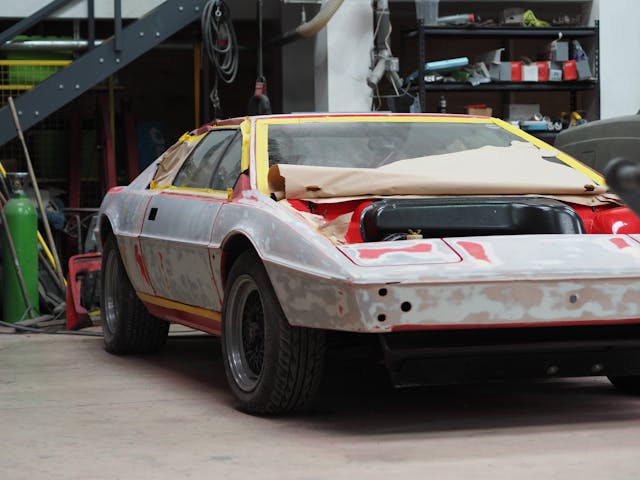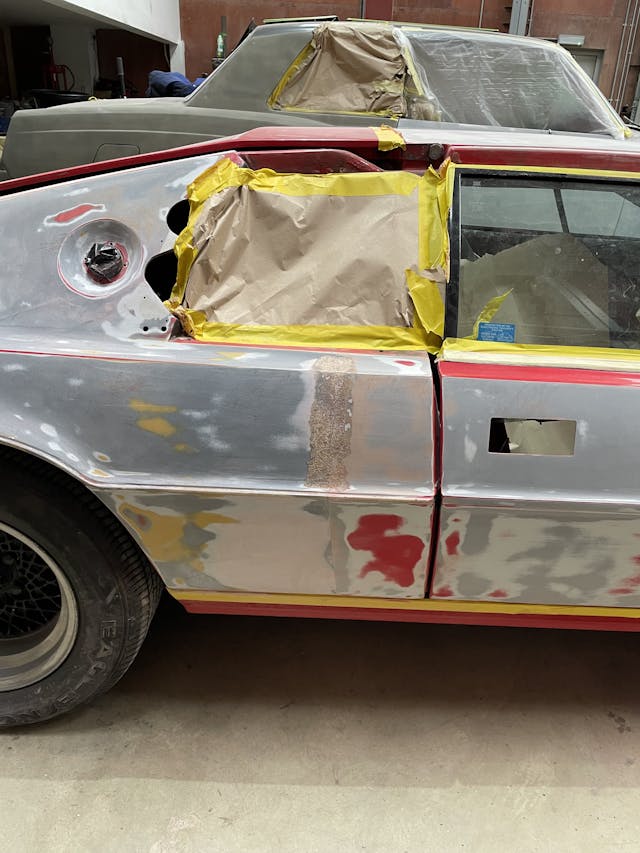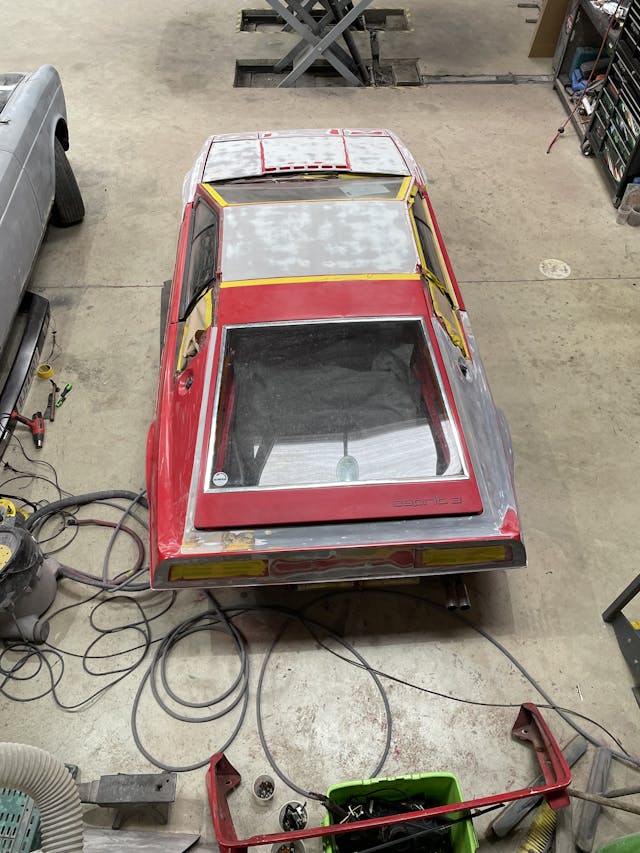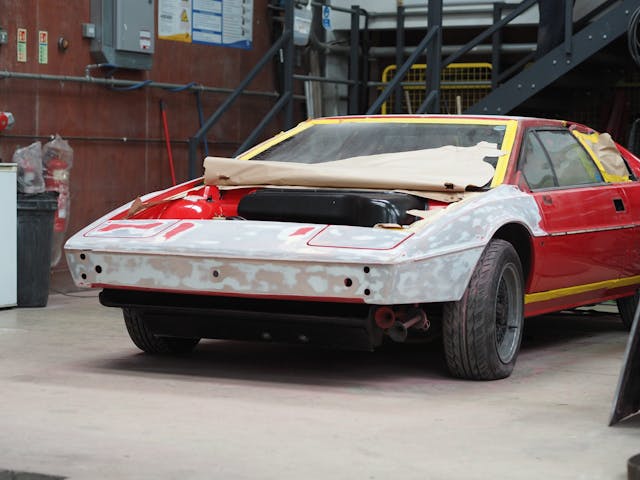Why does fiberglass painting take so long? We peel back the layers
There is a certain smugness that comes with owning a fiberglass-bodied classic car. While others worry about tin worm eating away panels stamped out in the factory or hand-formed on an English wheel, owners of cars made with glass-reinforced plastic (GRP) know that rust simply won’t be an issue. But before any smugness creeps in, know that respraying a fiberglass-bodied car is quite the undertaking, as I am finding out.
Fiberglass panels are created in molds, into which several layers of fiber matting are hand-laid and then doused in a liquid resin that hardens to form a lightweight but rigid and relatively tough structure.
On the plus side, it’s inexpensive to create a GRP body. You don’t need to produce pricey metal dies or use powerful presses to stamp out parts. Plus, there’s absolutely no possibility of corrosion with the end result.
Unfortunately, there’s a flipside. Repairing or repainting fiberglass can be far more time-consuming and costly than it is with metal panels.
In the worst scenarios, accident damage or rust can be cut out of steel panels and, with some deft work with hammers and a welding torch, new metal grafted in its place and painted. With fiberglass, cutting out cracked material is possible, but layering in replacement fibers and resin coating to achieve a perfect match is a messy and intricate business, one in which chemistry plays a key role in success or failure.

For example, if the resin isn’t fully cured, air and moisture can be trapped inside it, later working their way to the surface in the form of micro bubbles . It’s fair to say that not every low-volume British carmaker was sufficiently patient in this regard when it first built its cars.
“Fiberglass is porous, and the materials they used back in the day weren’t as good as today,” says Leigh Birch, resident GRP expert at The Beaconsfield Workshop in the U.K. “The gel coating used to crack a lot and if you have that you need to take it off and re-resin the whole car.”
So, in order to be sure of a long-lasting, high-quality finish, the only answer is to go back to the bare body. Unlike the tough surface of steel or aluminum, the paint on GRP cars can’t be doused in paint stripper as it can react with the material. Neither can machine tools be deployed for fear of inadvertently altering the car’s design.
“You can’t use paint stripper as [the fiberglass] will just absorb it and you’ve got to be so careful with all the edges,” Leigh explains. “You’ve just got to dry-flat it down by hand.”
This is pretty brutal but necessary to get all the paint off the @lotuscars Esprit. Fine work by @BeaconWorksh #lotusesprit #esprit #lotus pic.twitter.com/Wi14FTkITb
— Nik Berg (@reallynikberg) April 29, 2022
That’s an incredibly time-consuming exercise, probably around four weeks in the case of my own Lotus Esprit. Once it’s done, any cracks or imperfections have to be filled and a new resin coat applied and cured. This then needs to be dry sanded to a dull finish in order for the surface to take the primer—but that abrasive step can’t break through the gelcoat itself.
Eventually, you can spray on primer—up to four coats of the stuff. More manual sanding follows. Then you can apply the top coats and clearcoat, with the exact number of each defined by the color. It’s not a job to be hurried.

The result should be a finish that’s as good as (likely better than) the factory’s. Even so, cautions Leigh, there are considerations when maintaining after your GRP car if you want to keep the body pristine.
The worst thing you can do is put on a car cover, even a so-called breathable one. “We’ve noticed over the years that if people put covers on their cars over the winter they seem to sweat and it brings up micro blistering in the paint. So let the air get to it, or it just can’t breathe.”
My own Esprit certainly seemed to deteriorate last winter. After it returns from the workshop I’ll need to find a new storage solution. As Martin Hawes, cofounder of The Beaconsfield Workshop, rightly points out, “You definitely don’t want to have to do this again.”



